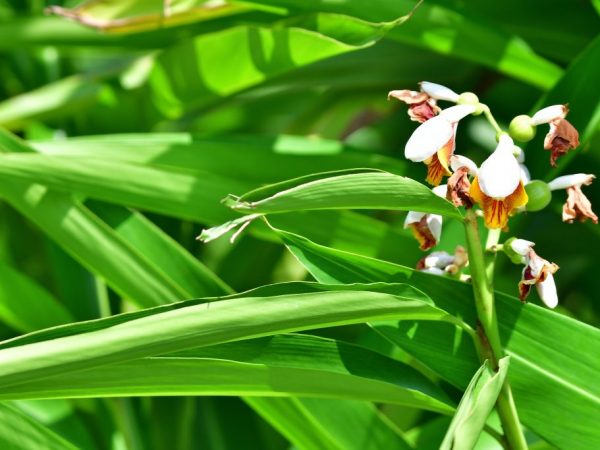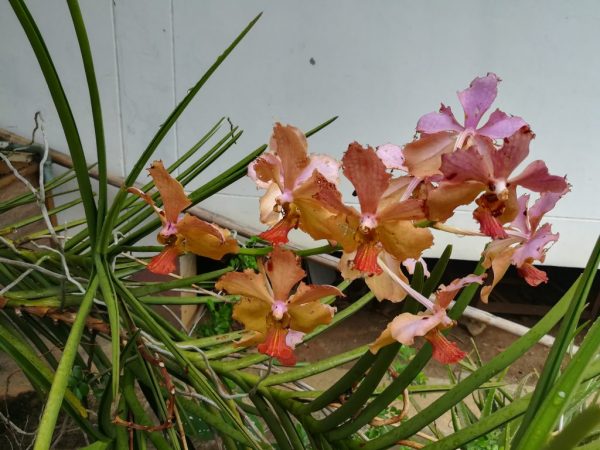Why does an orchid have soft and sluggish leaves
The external state of an orchid always indicates its well-being and health. If the orchid has soft and lethargic leaves, this is a sign of a malfunction in the life of the flower, improper care. Orchid leaves also wither due to the development of the disease.

Why does an orchid have soft and sluggish leaves
The main causes of leaf lethargy
To help the plant recover, the first step is to determine the cause of the change.
Overheat
The first reason for sluggish, soft and wrinkled leaves is overheating. An exotic variety loves light and warmth, but an excess of them can cause irreparable harm to the plant. In the hot season, in summer, especially at noon, the sun's rays aggressively affect the flower. At the same time, it begins to intensively evaporate moisture. At the same time, the roots of the plant cease to receive the required amount of moisture, they cool down, which negatively affects the condition of the plant and its appearance.
The heat from heating devices is especially destructive. Thermal exposure leads to the fact that moisture from the plant evaporates, as a result of which the flower gradually dies.
Lack of moisture
If the phalaenopsis orchid blooms, but its leaves have withered, it has dropped them, one of the reasons is a lack of moisture. Too dry soil is destructive for Phalaenopsis.
There is no specific regime for when and how often to water the orchid. The frequency and dose of watering depend on two factors:
- air humidity;
- ambient temperature.
It is worth watering the flower only when the soil in the pot becomes completely dry, but it does not crack.
Root problems
Orchid leaves and flowers wither when there are root problems. If Phalaenopsis has withered flowers, it is worth looking at the color of the root system.

The main thing is living roots
If the roots are green or light colored, don't worry: this is what a healthy root looks like. The appearance of brown areas indicates the presence of rot. Most often, darkened roots are a signal of a lack of oxygen, which occurs due to too dense soil. This happens if the plant is not transplanted for a long time, the soil is not loosened, or large doses of fertilizers are used when feeding.
Dense soil
It makes it difficult for oxygen to reach the root system, which is why the flower begins to gradually fade. This primarily affects the leaves of the orchid. They become lethargic and soft. The roots are the second to suffer.
Excess moisture
Waterlogging is one of the most common factors that negatively affects the condition of the plant. If there are no holes in the pot or there are too few of them, it is difficult for the orchid to get rid of excess moisture. The water stagnates in the container, which is why the leaves of the plant wither.
Tight capacity
The orchid also suffers from problems with the root system. The condition of the roots of phalaenopsis is negatively affected by a too tight pot, waterlogging of the soil or too dry soil, a large amount of fertilizers.In total, there are 4 degrees of root damage: light, medium, severe and especially severe. In the last two cases, the chance to save the flower is 1 in 100.
Overfeeding
Improper feeding also leads to disastrous results. Orchids tolerate fertilizers well, but an overabundance of nutrients can cause irreparable harm. Caring for a plant at home is also in its competent and balanced nutrition.
Diseases and pests
Diseases and pests are the most common cause of phalaenopsis wilting. Usually we are talking about the appearance of the larvae of the click beetle. They settle on young plants, damage their root system, which is why the flower does not receive the required amount of moisture. When affected by click beetles, fadenopsis needs to urgently flush the entire root system, and then transplant it into a new soil.
The first watering after transplanting is carried out after 2 weeks. If the phalaenopsis flowers have become lethargic, it is likely that ticks have settled on the plant. Insect pests gradually absorb the juice from the tissues, so it changes its appearance: the flowers wither, become wrinkled and change their shade to dark. The leaves of the phalaenopsis orchid especially often wither from red and white pest mites.
Frostbite
If the orchid has sluggish leaves, frostbite is a possible cause. They wither not only during flowering in summer, but also in winter. All because the flower is frozen. In this case, the lower and upper leaves become soft. Stay in a draft, minus or zero temperatures lead to the fact that the flowers darken, become shriveled and lethargic.
If the winter is too cold outside the window, frostbite of the plant occurs at a temperature below 15-17 ° C. It is impossible to solve this problem - the frozen flower dies sooner or later.
Control measures
Phalaenopsis is an exotic species, so a pair of limp and soft leaves is not a problem. You should not remove them: even in this state, they give the plant nutrients. We must wait until they disappear by themselves.
If most of it wilted, this is already a clear cause for concern. The flower needs help to recover, and the sooner the better:
- Make sure your orchid does not have sluggish leaves due to overheating or hypothermia. Think back to when the last watering was done. Measure the temperature in the room, check if it is too high. The sun's rays do not fall on the flower. If so, move the pot to a different location, move it deeper into the room. This is done so that the temperature of the roots gradually reaches the required level.
- Rock the outlet. This will ensure that the root system of the orchid is normal. If the flower sways freely, the roots are dry or rotten. In this case, it will be necessary to remove all diseased parts of the root system, and to treat healthy parts with an antiseptic. It should not contain alcohol.
- If the flowers of a blooming orchid have become lethargic due to overheating, spray the plant or wipe them with a damp cloth. This will help revive wilted leaves. Also keep an eye on the room temperature. If the flowers have wilted due to overheating, a little special preparation is added to the water for irrigation to reduce the stress level of the flower.
- If orchid leaves have become lethargic due to insufficient watering, the plant should be watered with a special solution. After drying, water the flower with water with the addition of succinic acid. Watering is done with immersion in water, the temperature of the liquid should be about 40 ° C. The duration of the procedure is about an hour.
- If infested with parasites, collect the ticks, and then treat the plant with a special solution against pests.
Resuscitation of a plant without leaves
There is a chance to cure a flower without leaves at home, but this happens in rare cases. Often, with a lack of moisture or an excess of sunlight, the leaves completely fall off.
Good roots can bring a plant back to life.It will take a long time to wait for the outlet to wake up and a new kidney appears. To obtain full flowering, it is necessary to build up a good vegetative mass, which takes at least a year.
Conclusion
If the leaves of the orchid become soft and gradually wither, all causes of this phenomenon should be urgently excluded and care should be optimized. Under good plant conditions, this problem will not have to be faced.


